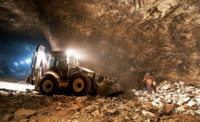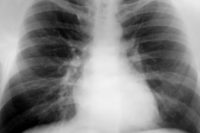Mining industry challenges coal dust rule in court
 The National Mining Association (NMA) has asked a federal appeals court to review the Mine Safety and Health Administration's (MSHA) regulation for the control of coal dust in underground coal mines, contending that the rule “embodies fundamental legal and technical infirmities in its scope, foundation and framework.”
The National Mining Association (NMA) has asked a federal appeals court to review the Mine Safety and Health Administration's (MSHA) regulation for the control of coal dust in underground coal mines, contending that the rule “embodies fundamental legal and technical infirmities in its scope, foundation and framework.”
NMA President and CEO Hal Quinn called the rule a “one-size-fits-all approach” that won’t deliver real worker protections and didn’t take stakeholder suggestions into account.
"We are left with no choice but to seek judicial intervention to resolve these important concerns," Quinn added.
Black lung fatalities
According to estimates from the National Institute for Occupational Safety and Health (NIOSH), more than 76,000 miners have died since 1968 from diseases caused by exposure to respirable coal mine dust, such as coal workers' pneumoconiosis, emphysema and progressive massive fibrosis (collectively referred to as black lung).
The final rule:
- reduces the overall dust standard from 2.0 to 1.5 milligrams per cubic meter of air and cuts in half the standard from 1.0 to 0.5 for certain mine entries and miners with pneumoconiosis
- requires immediate action when dust levels are high
- requires more frequent sampling of areas known to have relatively high dust levels, such as those closest to the production area
- changes the method of averaging dust samples, which previously allowed miners on some shifts to be exposed to levels above the standard
- requires sampling for the full shift a miner works to ensure protection for all working hours, rather than stopping measurement after 8 hours, as under the previous requirement
- requires that, for MSHA-collected samples, MSHA will issue a citation for any single, full-shift sample at or exceeding the citation level
- requires dust samples to be taken when mines are operating at 80 percent of production, as opposed to the previous 50 percent requirement, so that samples are more representative of actual working conditions
- requires mine operators to conduct thorough on-shift examinations of dust controls and verify controls with written certification; and
- improves medical surveillance of miners
NMA asking for postponement
Although the rule has a two-year phase-in period, NMA is requesting that the MSHA postpone the effective date to address what it calls “technical flaws and provisions that do not align with other requirements of the rule.”
Watzman cited the requirement, beginning Aug. 1 of this year, that operators take "immediate corrective actions" based on sampling technologies that he says do not provide them with real-time measurements.
“Sampling data on which ‘immediate actions’ must be based will only be available days or weeks later, therefore having no relevance to actual dust levels at the time data is received,” said Watzman. “The technology needed to comply with this provision will not be available until at least 18 months later.”
Watzman also claims that the new sampling method specified in the rule has not been sufficiently studied and cannot be accomplished by the deadline.
He said the MSHA ignored his organization’s “numerous, straight-forward recommendations for practical measures” to reduce respirable dust.
A copy of the final rule is available on MSHA's website at http://www.msha.gov/endblacklung/.
Looking for a reprint of this article?
From high-res PDFs to custom plaques, order your copy today!






.jpg?t=1721257160)
